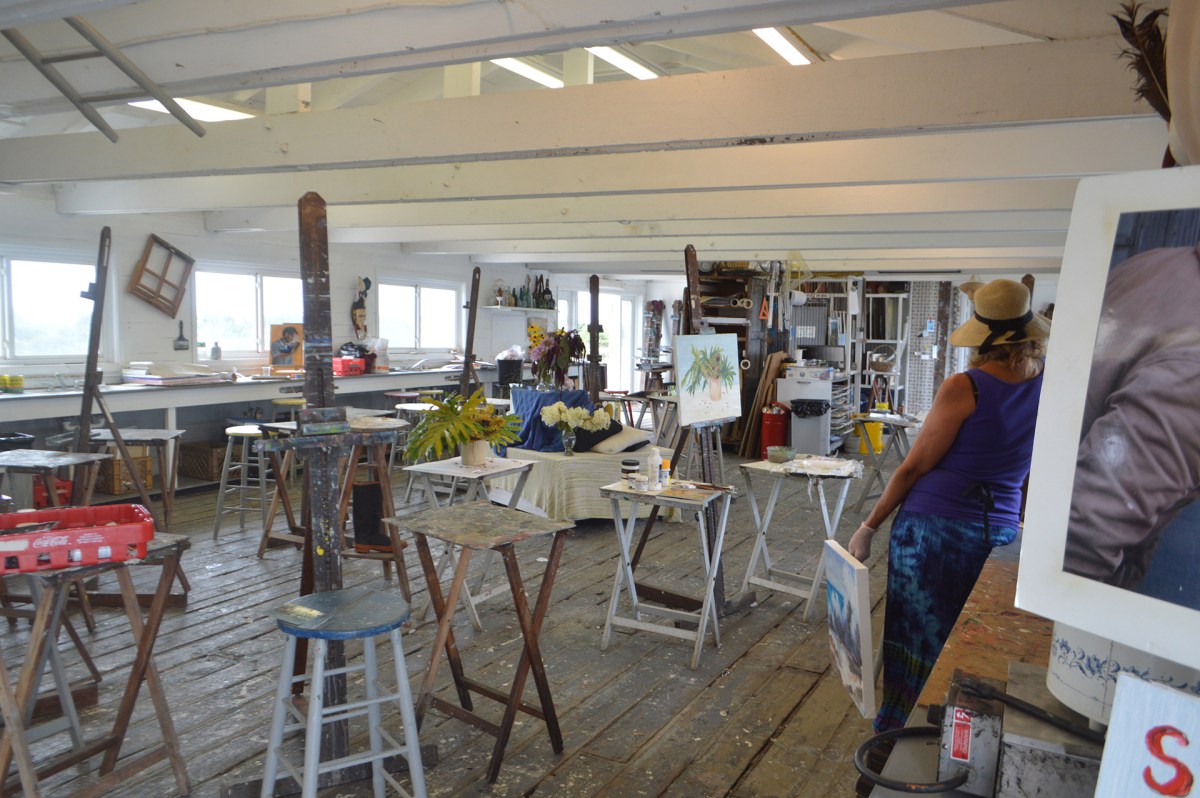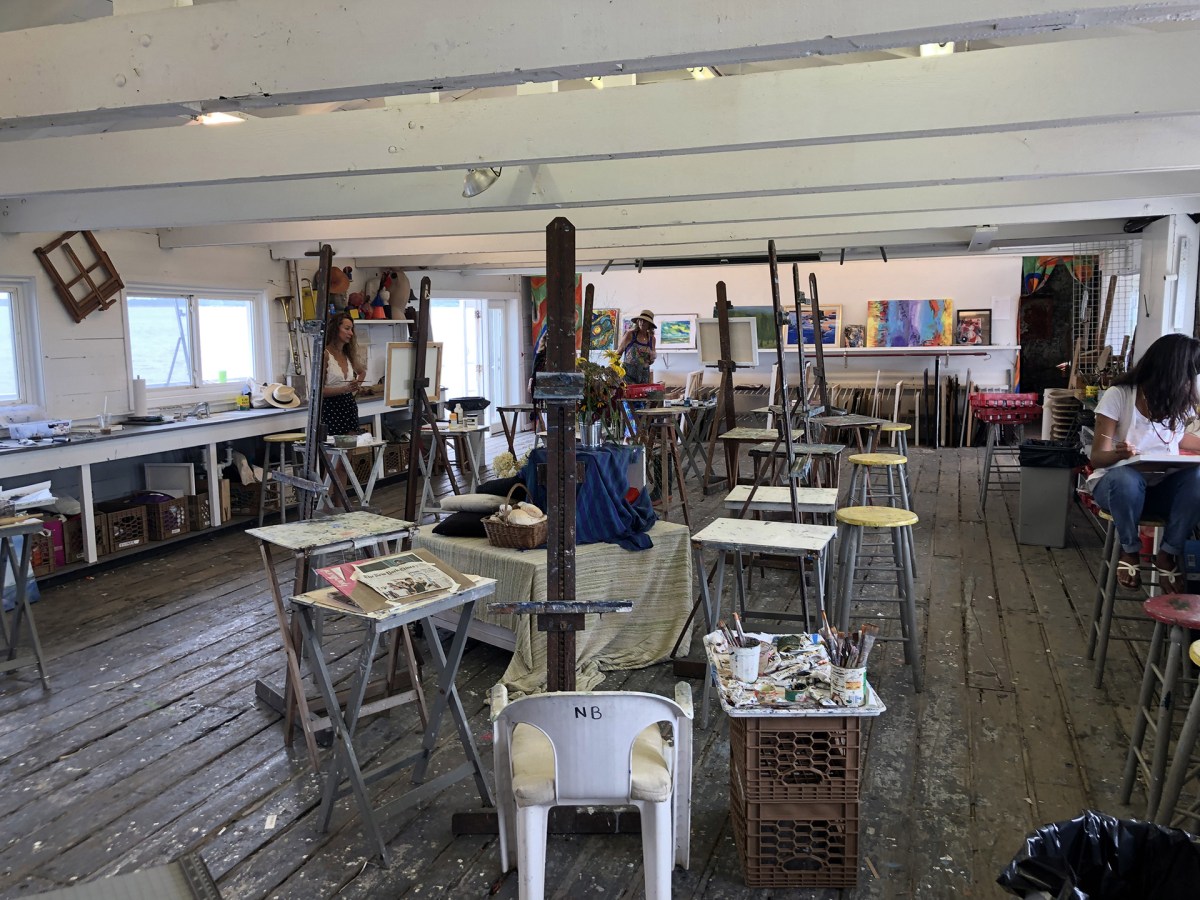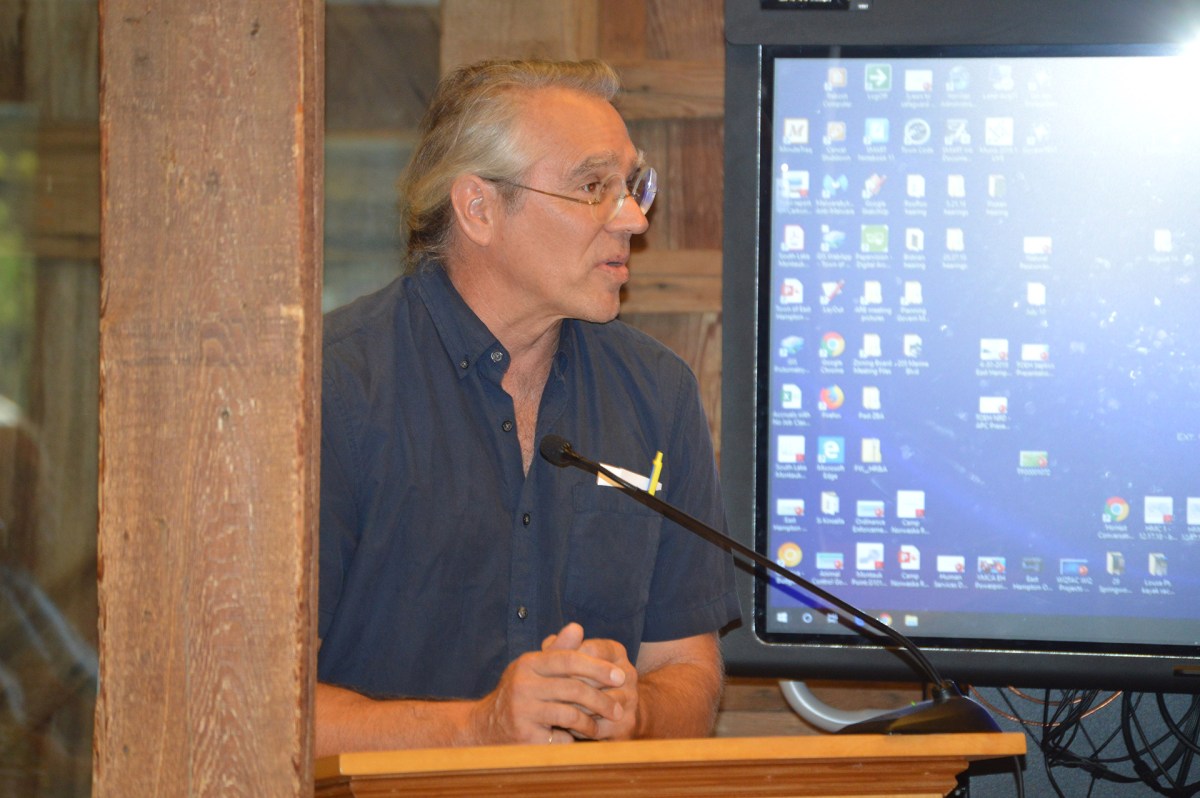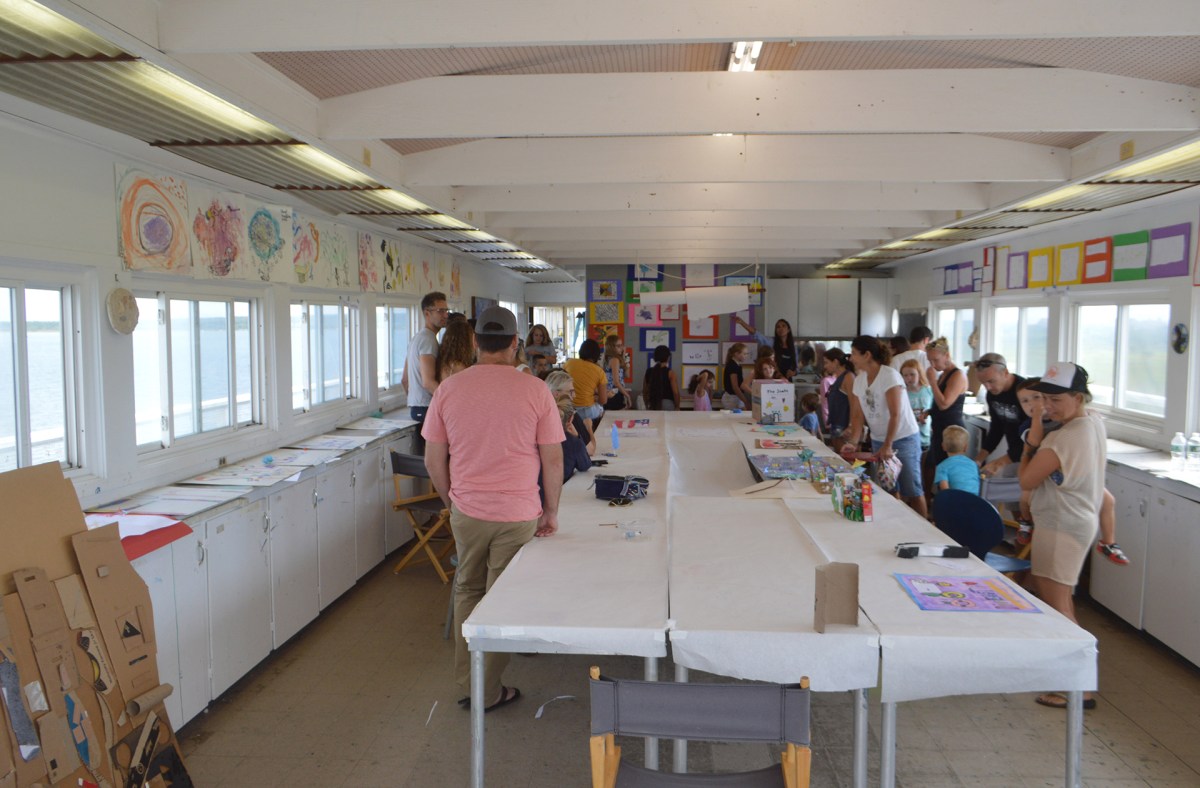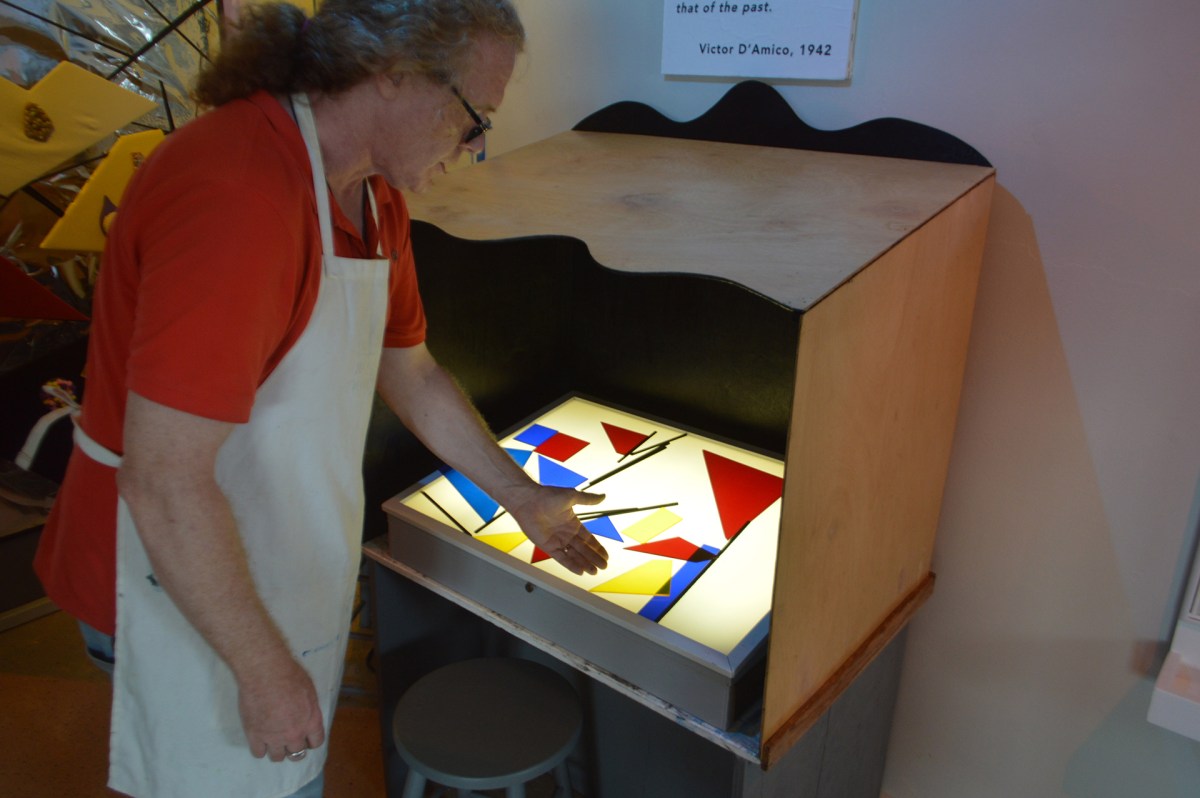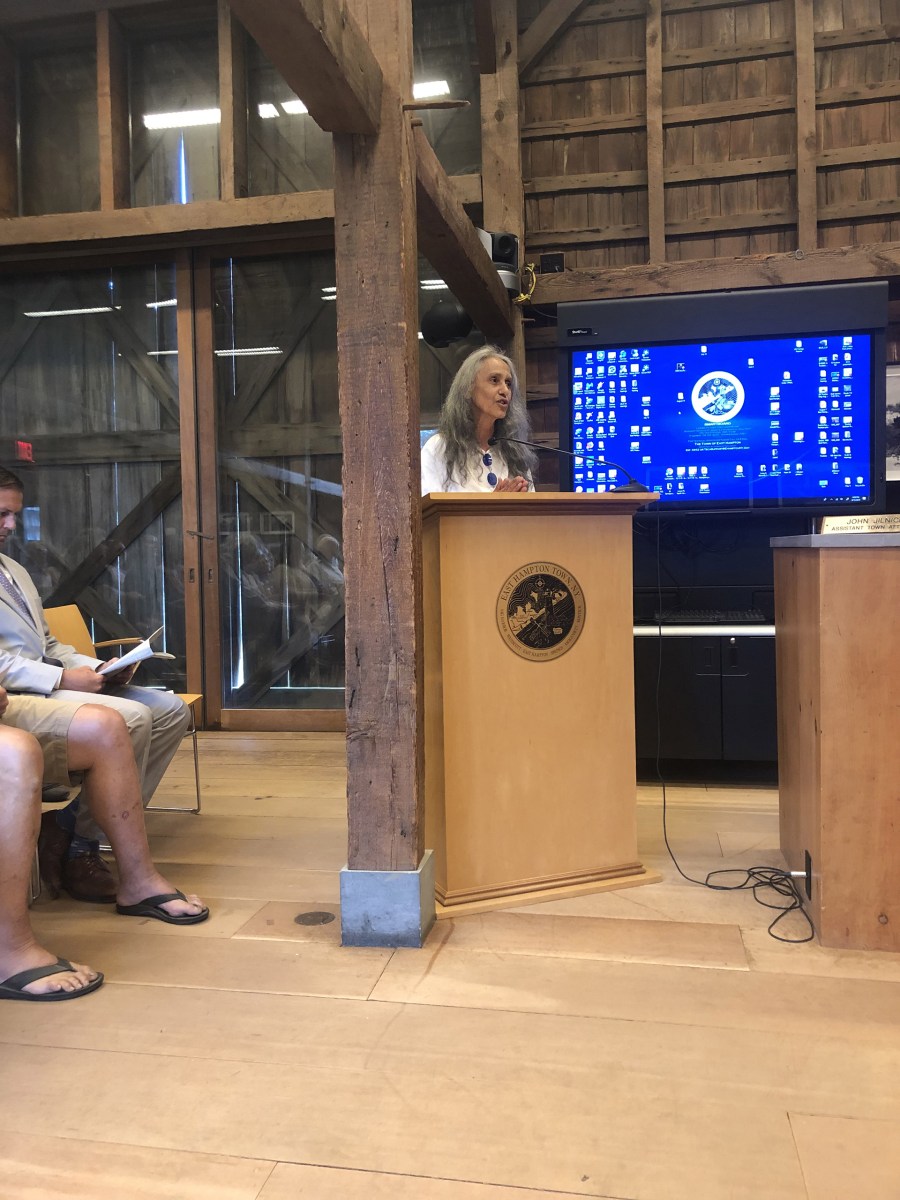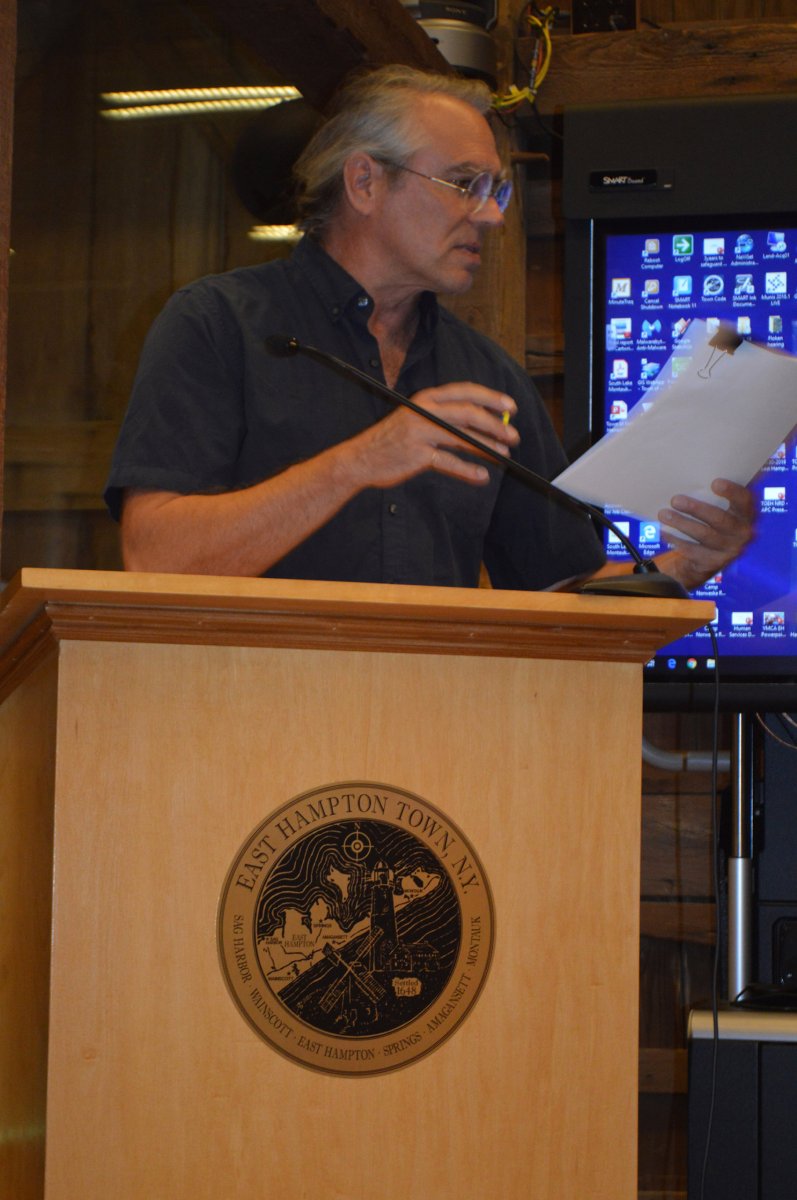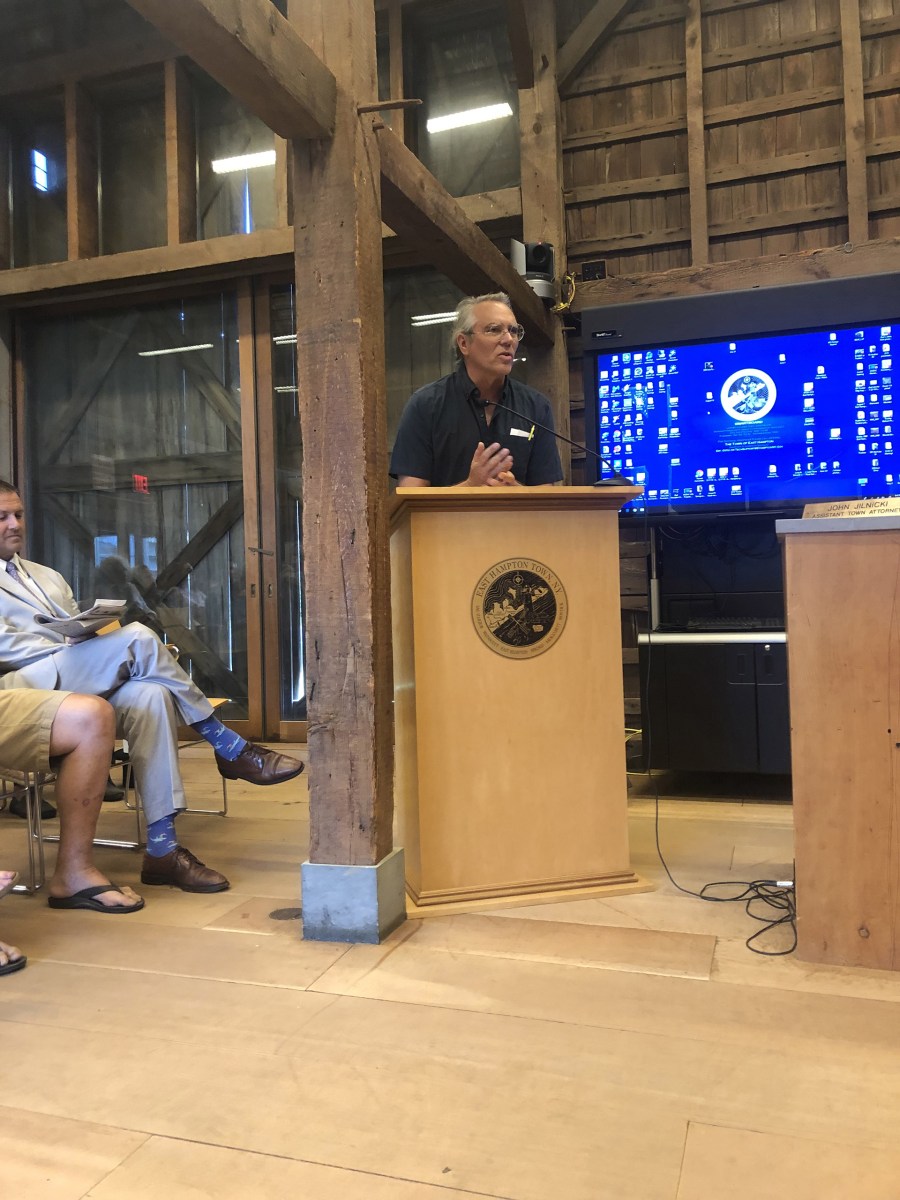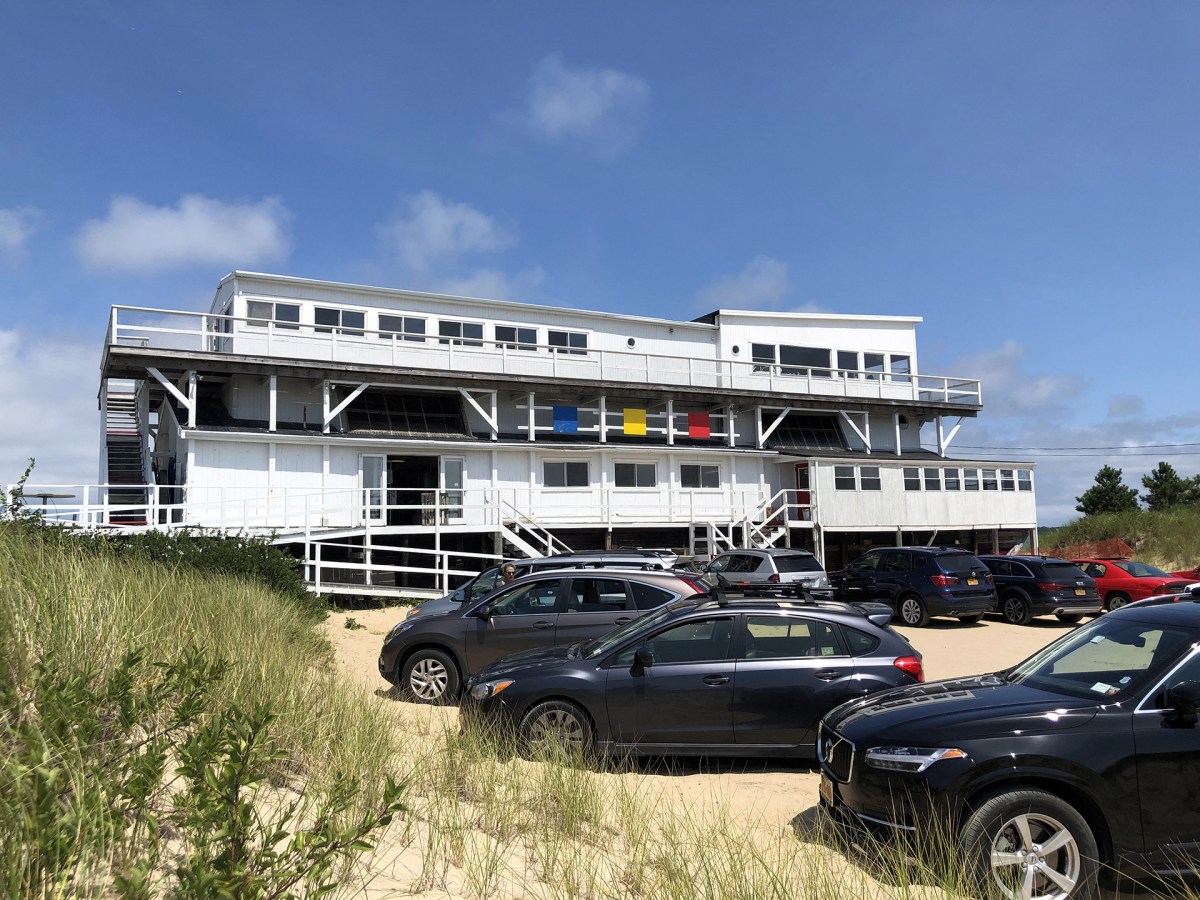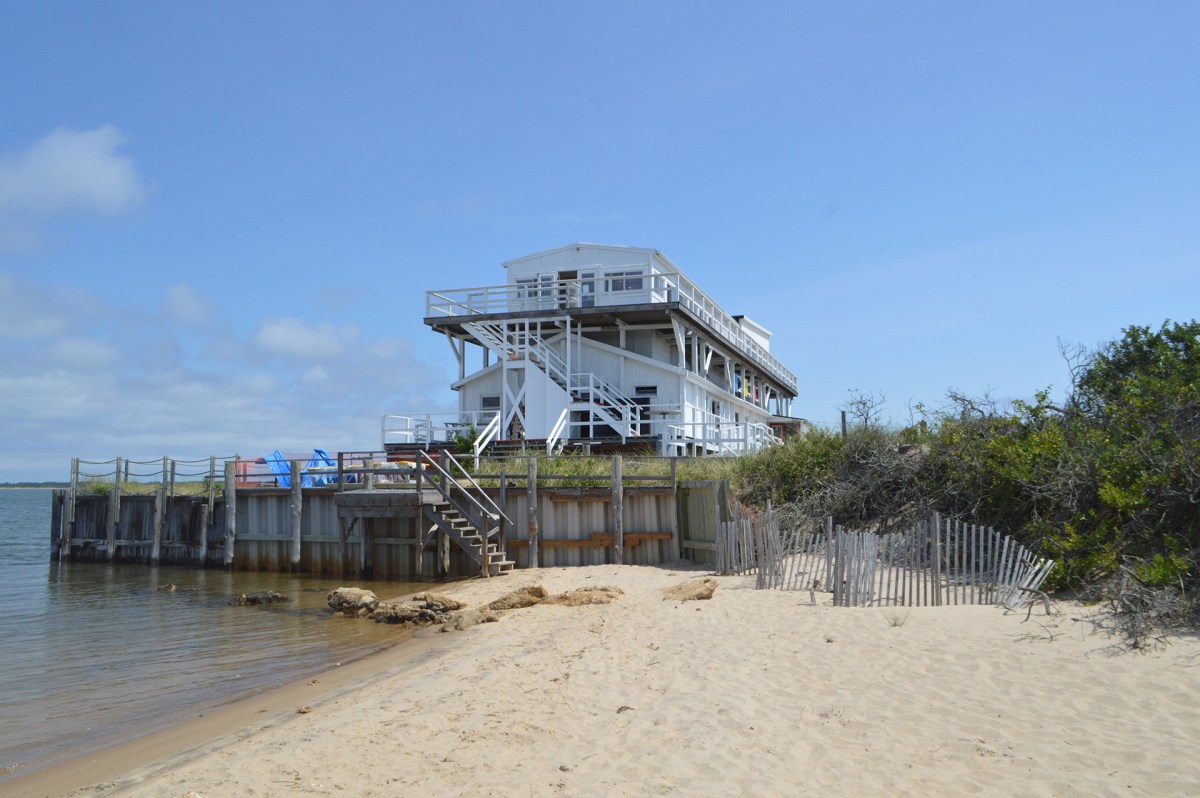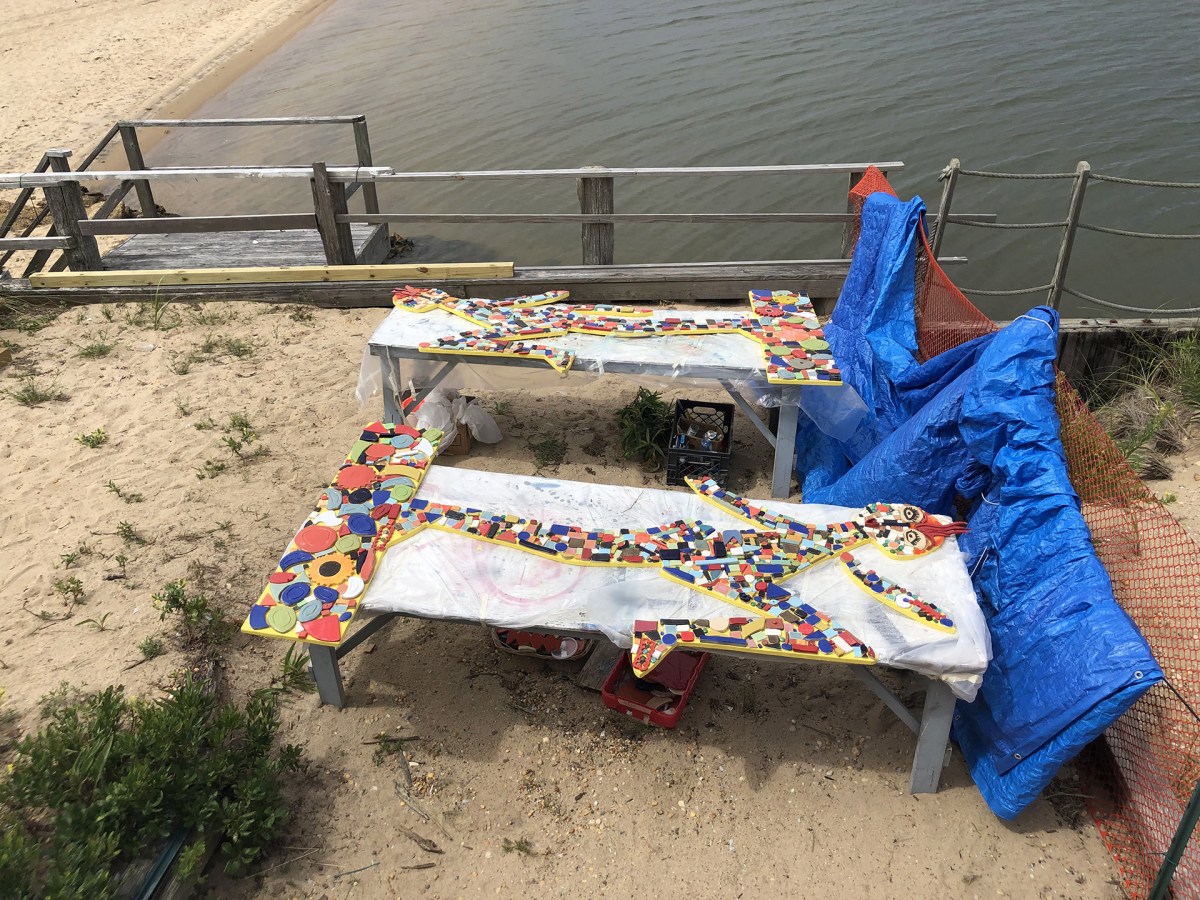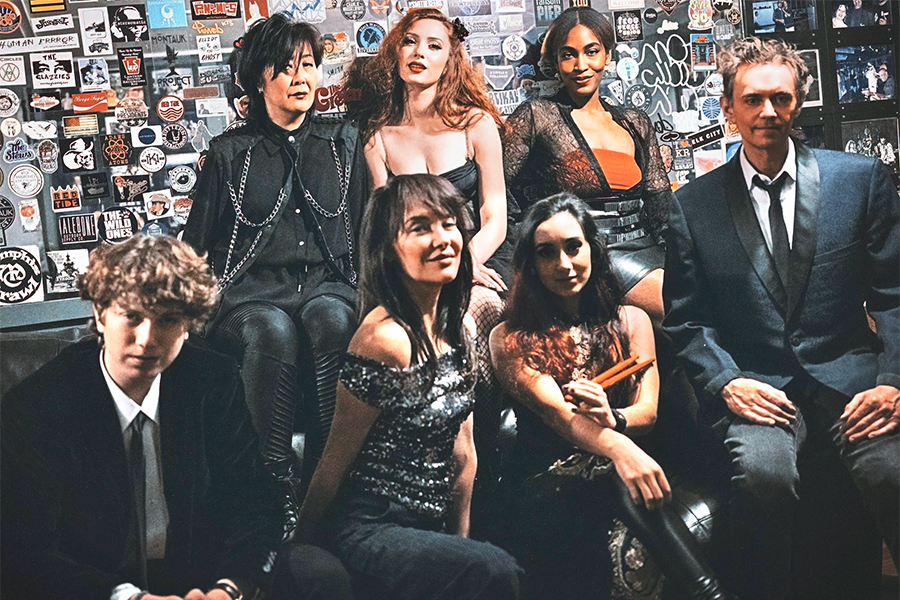Historic Status For D’Amico Home, Art Barge?
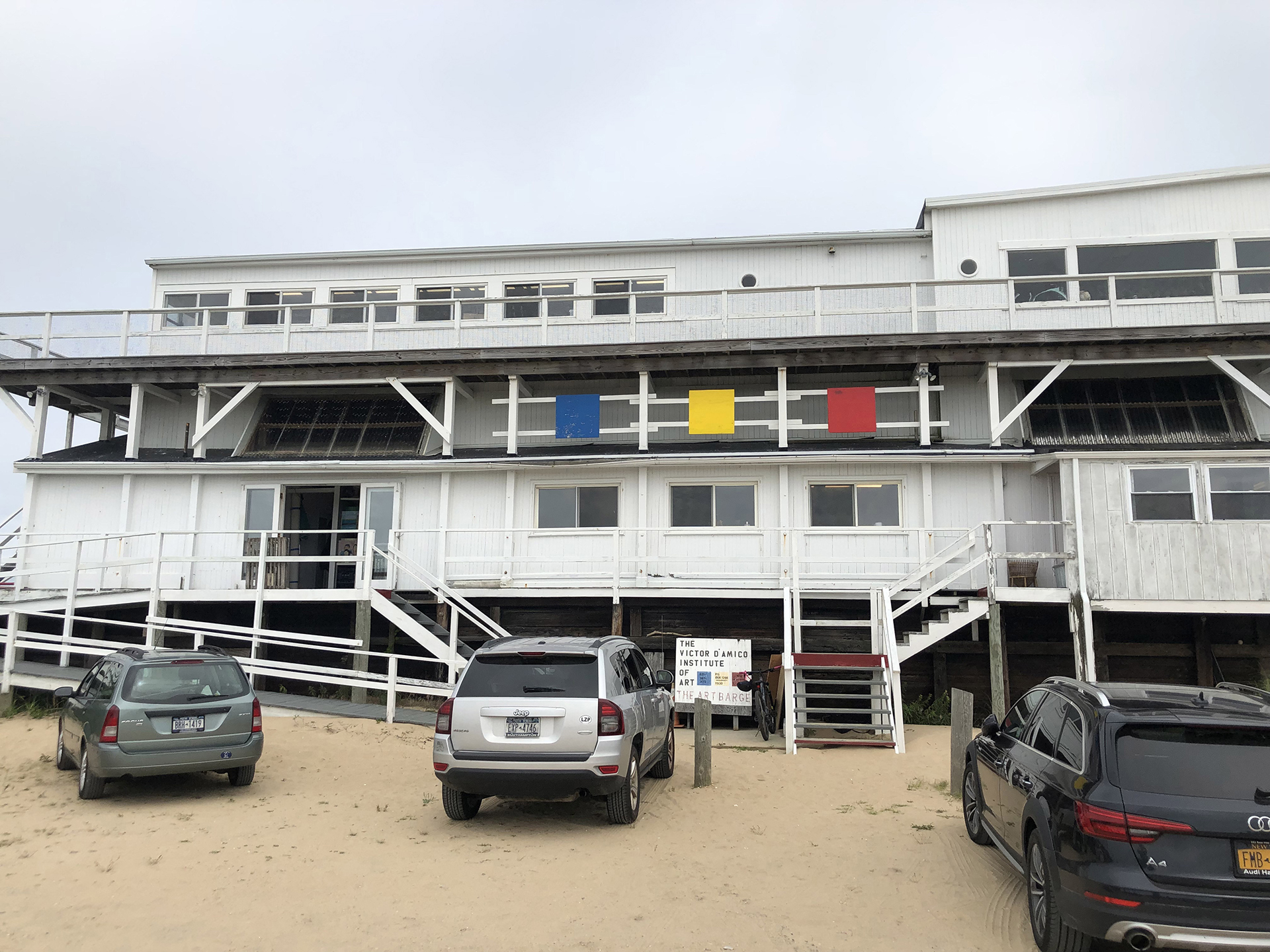
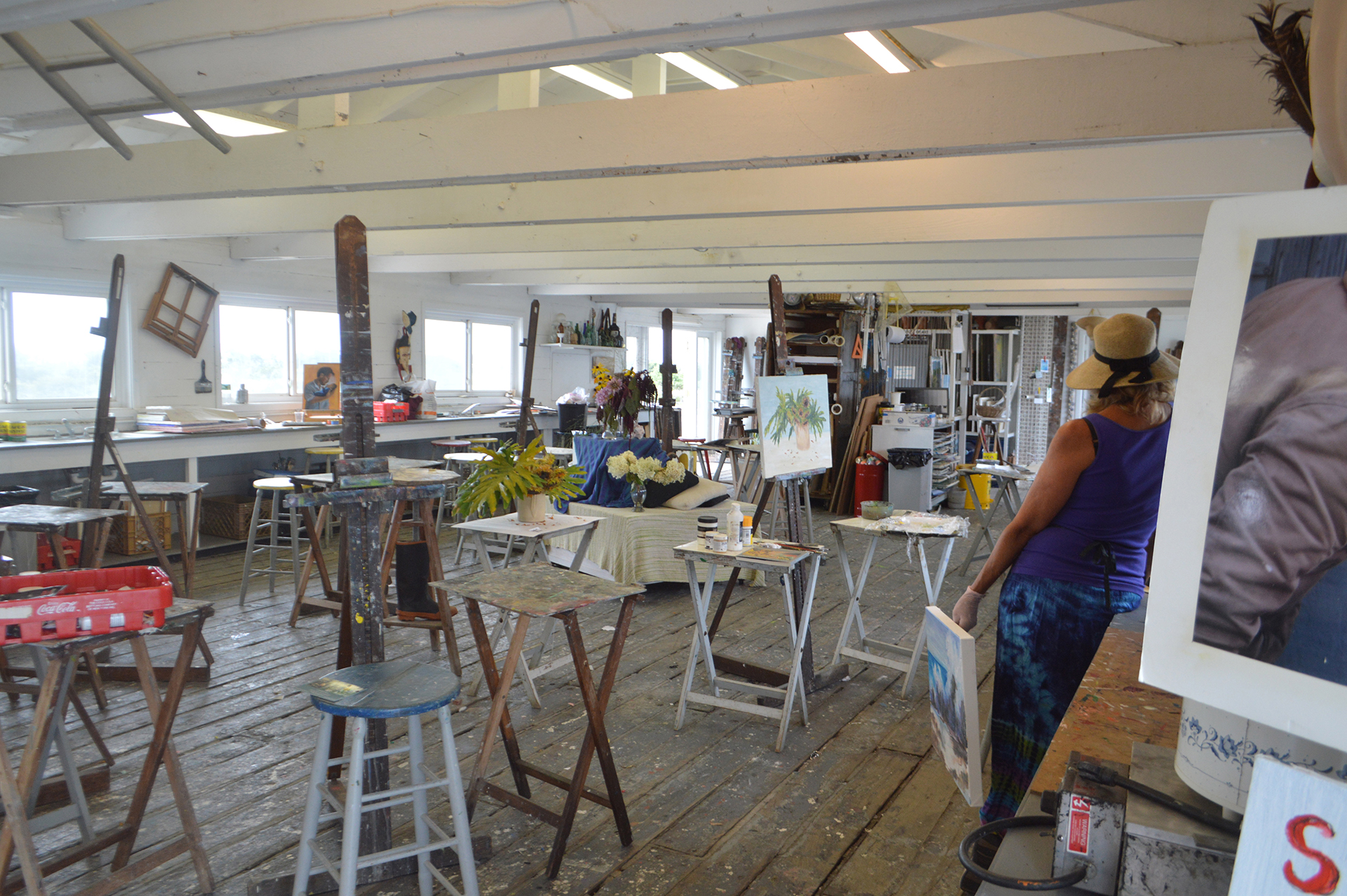
Supporters of the Victor D’Amico Institute of Art, better known as the Art Barge, and the Victor and Mabel D’Amico Lazy Point house, showed up in numbers for a public hearing in front of the East Hampton Town Board Thursday evening, August 15. The board is considering whether the two structures, hot spots for art in post-World War II America, should receive historic designation.
Christopher Kohan, the executive director of the Art Barge’s board of trustees, told the board he had first come to the Art Barge in 1975. He gave a history of the iconic, idiosyncratic structure.
Victor and Mabel D’Amico owned the land where the Art Barge is located. He wanted to create a new art school in East Hampton Town, after having taught art classes in Ashawagh Hall in Springs in the 1940s.
D’Amico came up with the idea of using a WWII barge. “Repurposing” was essential to the D’Amicos. Tugboats towed the barge “from Jersey City up the East River, and out along the Long Island Sound,” Kohan said. The barge was beached where it currently rests, on the land owned by D’Amico.
“The story he told me is that when he came to the town board then, they asked him who his backers were,” Kohan told the board. D’Amico, the founding director of education for the Museum of Modern Art in New York City, rattled off the names of the board of trustees at the museum, starting with Nelson Rockefeller. The board quickly gave their approval, and the Art Barge was issued a certificate of occupancy soon after.
“History can really share not only the past, but also gives something for the future,” Kohan told the board on August 15.
Joyce Raimondo, who began teaching art at the Art Barge in the 1990, said, “I was so deeply moved by Victor D’Amico’s legacy and how it is alive at the Art Barge then, and how it is alive today,” she said.
“Victor D’Amico believed that everyone — children, teens, adults, regardless of your educational status, regardless of your financial status, or even your ability to create art — has a right to be expressive and to create,” she said, concluding, “It would be so sad if that was not preserved for future generations.”
Joan Edwards of Amagansett said, “The D’Amicos have been a part of our cultural and social history.” She spoke specifically about the house in Lazy Point, saying it is “an amazing place. The design is a unique blend of function and art, in a small space. It is also an example of repurposing.” She shared an anecdote. When the D’Amicos were building their house, using parts from another house, “Jackson Pollock suggested that the windows run all the way to the ground.” And so, they do.
Orly Friedman, treasurer of the Victor D’Amico Institute for Art, told the town board that “giving the Barge and the D’Amico house historic status will be an impetus for us to start documenting what Victor did for arts, for art education.” She said in a forward to one of her books, the noted late photographer Diane Arbus wrote about D’Amico, that “he put the camera in her hand.”
A visitor to the Art Barge was given a tour by Jim Bergesen, an artist who is one of the seasonal teachers there. A walk-through revealed a sprawling space that is, at the same time, intimate. There are open areas, as well as numerous nooks and crannies, each with its own educational and artistic purpose.
Esperanza Leon, who has been the coordinating director of the D’Amico Art Institute since 2017, said on August 16 that the Institute is about to launch a funding drive, to repair the bulkheads damaged in a storm last year at the Art Barge. It is already halfway to its $200,000 goal.
Regarding the historic status being considered by the town, Leon said, “They are two very, very special places. I admire and respect Chris Kohan so much for his efforts to steward all of this. It is so important to continue this, because we all are here for a limited time. How can we make this go on
another 60 years and beyond?”
t.e@indyeastend.com

